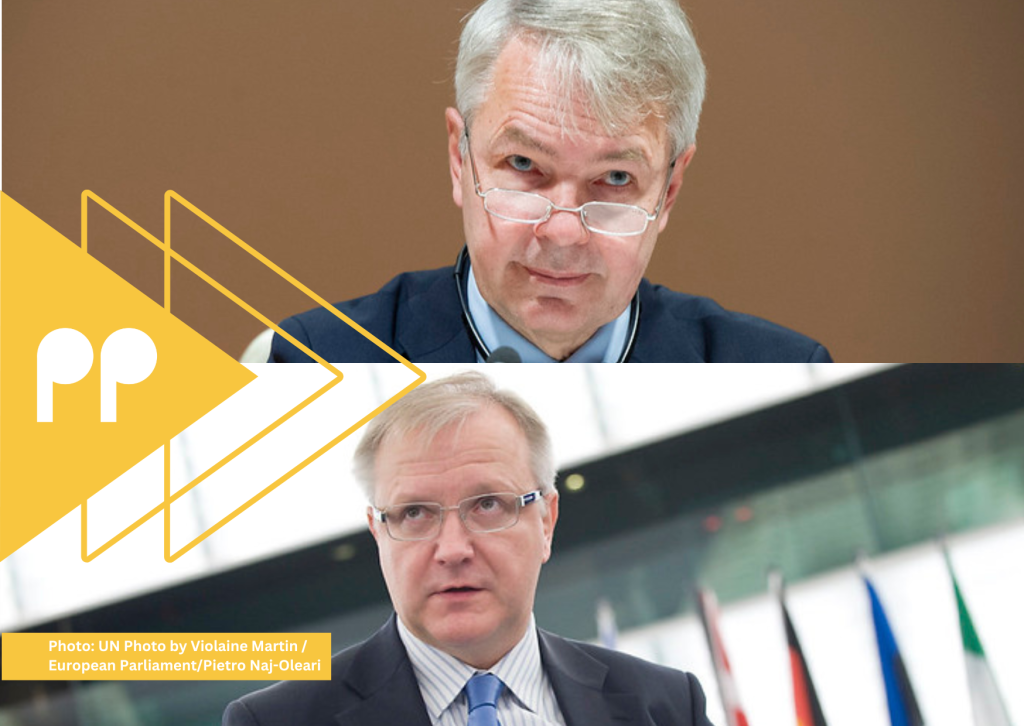As Finland approaches the first round of presidential elections on January 28, a notable shift in voter sentiment is emerging, potentially reshaping the political landscape. The latest presidential poll shows support for the centre-right front-runner, Alexander Stubb of the National Coalition Party (NCP) and his closest competitor, former foreign minister Pekka Haavisto of the Green Party, stalling, while right-wing nationalist outsider Jussi Halla-aho is rapidly gaining ground in third place.
Since no candidate is likely to win an outright majority, the election will be decided in a run-off between the top two contenders on February 11, still likely to feature a left-right battle between Stubb and Haavisto.
Key takeaways
- Stubb’s lead under pressure: Stubb still leads the race but faces increasing pressure as his support slightly decreases.Yet polls still give him a comfortable lead over any rival in the second round.
- Halla-aho’s significant gain: Halla-aho, parliamentary speaker and a member of the Finns Party, has made a remarkable surge in late polls, closing in on second-placed Haavisto, whose support is stagnating. This highlights the anti-immigration Halla-aho’s growing influence and the potential for a reshaped political landscape.
- Volatile voter preferences across candidates: The poll reveals fluctuating voter support among the top candidates, including a rise in support for Olli Rehn (Centre Party) and a decrease for both Stubb and Haavisto. This volatility suggests that Finnish voters are reassessing their choices, leading to a dynamic and evolving electoral contest.
Behind the numbers: analysing the top contenders
This is sure to be a pivotal moment in Finnish election history, as it’s the first time voters go to the polls since becoming a full-fledged NATO member. By Monday evening, almost 1.5 million Finns had cast votes in the election and domestic turnout had risen to 34.9 percent.
Stubb continues to lead the pack, but his dominance is increasingly challenged. Latest polls indicate a slight decrease in support for Stubb, a former prime minister, foreign minister and MEP, who now garners 22 percent of the vote. This shift suggests a volatile electorate, possibly reflecting changing public sentiments or emerging campaign dynamics.
Halla-aho has experienced a remarkable rise, reaching 18 percent of voter support in the most recent poll. This places him just behind Haavisto, who stands at 20 percent. Halla-aho’s gain, rising from 13 percent in the previous month, underscores the increasing appeal of the anti-immigration nationalist, whose party has been involved in high-profile racism incidents, and could alter the dynamics of the race. His late surge may mirror anti-immigration Geert Wilders’ surprise surge in the Dutch election last year.
While Haavisto remains in his runner-up position, he has seen his support dwindle slightly. His current standing, while robust, shows signs of vulnerability amidst the shifting political currents. Haavisto’s challenge will be to consolidate his base while reaching out to the undecided electorate.
Former central bank governor and European Commissioner Rehn has seen an incremental rise in his support, now holding at 12 percent. This increase, although modest, is significant for Rehn’s campaign, indicating a potential to sway undecided voters and impact the overall race.
PartyParty’s election forecast: a right-left divide, Stubb favourite
As the election moves towards a likely second-round showdown between Stubb and Haavisto, the contours of the political divide sharpen. This anticipated face-off is set to delineate voter preferences more starkly along ideological lines.
In this scenario, Stubb, representing the governing National Coalition Party of Prime Minister Petri Orpo, is expected to draw significant support from first-round backers of Halla-aho and Rehn. This aligns him with a more right-leaning electorate, consolidating a broad base of conservative and centrist voters.
On the other side, Haavisto is poised to attract supporters who initially voted for candidates like social democratic European Commissioner Jutta Urpilainen, and Li Andersson of the left alliance. This trend suggests a unification of the left-leaning electorate, bringing together a diverse coalition from the progressive spectrum. But the left remains in a structural minority in Finland, as last year’s parliamentary election showed.
This emerging polarisation underscores a pivotal challenge for both candidates: the need to extend their appeal beyond their established voter bases. The capacity to resonate with a wider segment of the electorate, cutting across traditional party lines, could prove instrumental in securing the presidential seat. The liberal internationalist Stubb has more chance of picking up floaters on the centre-left than the openly gay Haavisto has of attracting voters from the conservative rural camp.




